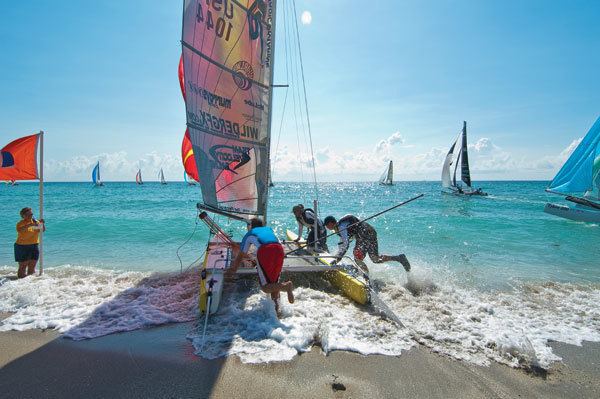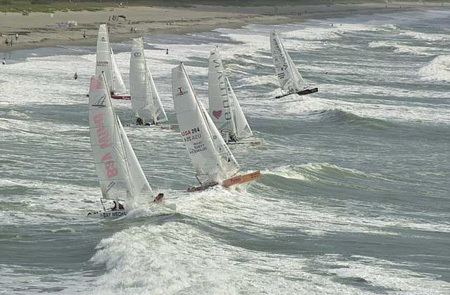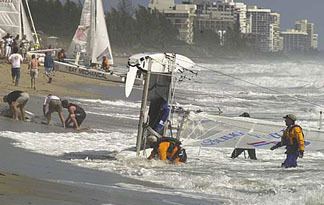 | ||
Old school worrell 1000 some history
Worrell 1000 is a 1,000-mile beach catamaran race between South Beach, Florida and Virginia Beach, Virginia. The motto of the race is: "Iron Men, Plastic Boats."
Contents
- Old school worrell 1000 some history
- Worrell 1000 yacht racing
- History
- Death
- Fees and prizes
- Race Strategy
- References

Worrell 1000 yacht racing
History

The origins of Worrell 1000 can be traced to a bet in a bar at the Worrell Bros., a Virginia Beach resort restaurant. The bet was between the owners of the bar, brothers Michael and Chris Worrell. The bet was that it was impossible to sail a sixteen-foot catamaran from Virginia Beach to Florida. On October 1, 1974, Michael Worrell and his crew Steve McGarrett left the Virginia Beach oceanfront with hopes of reaching Florida in one piece. Although they did not win the bet they still sailed through two hurricanes and had to make multiple boat repairs. After twenty days, they had to stop in Fort Lauderdale, Florida due to their catamaran being in poor condition.

Later, Worrell thought of turning the 954-mile journey into a regular regatta. The inaugural race, called "Worrell Bros. Coastwise Race", took place in May 1976. Four teams participated in the race. For that first race, limited to 16-foot hobie cats, there were very few rules. The participants could sail day and night, but they were supposed to come ashore and phone the restaurant once every 24 hours. The course was flipped with the start in Fort Lauderdale and the finish in Virginia Beach, to take advantage of the prevailing winds. The only team to finish the first race was that of Worrell and crew Guerry Beatson.

In 1979, Michael Worrell sold his half of Worrell Bros. to his brother Chris, who shortened the name of the race to Worrell 1000. In 1985, the rules were changed to allow any boat within 20-foot length, 8-foot beam, instead of just hobie cats. In 1987, the rules were changed to allow unrestricted beam. There was no race from 1990-1996, but it returned in 1997 as a production class event. Since 2000, the Inter 20 catamaran manufactured by Performance Catamarans of Santa Ana, California is the only boat allowed. Recent Regattas have been canceled to sponsors not covering their financial commitments, however, each year the race is planned.
Death
According to the website, Michael Worrell died on June 5, 2010.
Fees and prizes

The grand total for the prizes rewarded is US$1,000,000. The prize for first place is $400,000 second place $200,000 and third place $100,000. To cover the prizes the entry fee was raised by 8,000 dollars to 20,000 dollars in 2003. The entry fee covers the boat with sails, hotel accommodation along with safety gear.
Race Strategy

Team Spit Fire, one of the competitors in the 2001 race, offered some words of advice and things they learned during the race:
